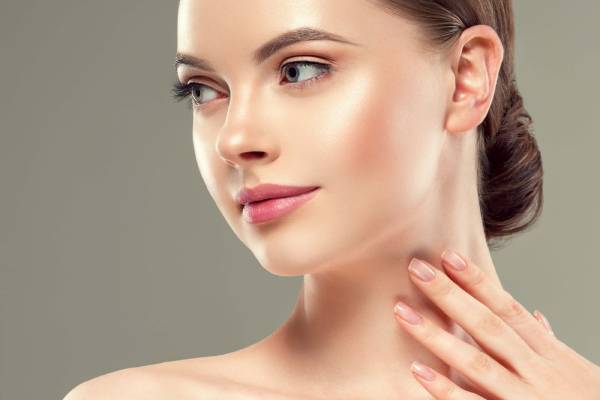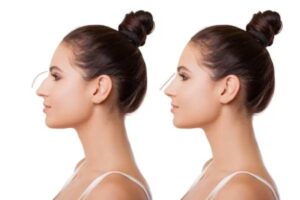Table of Contents
Rhinoplasty is performed to change the function and appearance of the nose. According to the American Society of Plastic Surgeons, nearly 220,000 rhinoplasties are performed annually in the United States alone, the most common facial plastic surgery. Simultaneous rhinoplasty can help you breathe better and look fit.
Is rhinoplasty right for me?
A common medical reason for rhinoplasty is nasal breathing problems. Nasal obstruction can cause problems with exercise, sleep disturbances, snoring, and obstructive sleep apnea, or it can interfere with some other activities. If medical treatments (such as nasal sprays or sleep apnea treatments) are not effective, the next step may be rhinoplasty. Rhinoplasty surgery, which is performed for medical reasons such as those mentioned above, is often covered by health insurance.
Deciding to have rhinoplasty
If you are looking for rhinoplasty, make an appointment with your surgeon to talk about how to do it. During the visiting session, talk about your goals and tell your doctor what is bothering your nose and how you want to change it.
Keep in mind that there is no such thing as a full nose. However, surgery can improve facial features and have a positive effect on your unique natural beauty. A plastic surgeon can describe facial features that differentiate you and tell you how changes can improve your appearance.
The surgeon examines the structure of your nose and other facial features. After this assessment, you can tell if your expectations of rhinoplasty are realistic or not. The surgeon will also consider your overall health and discuss the risks, recovery time, and costs involved.
There are several techniques for reshaping the nose. Once you have decided to have rhinoplasty, the surgeon must explain exactly what he or she is proposing for the surgery.
If you have health insurance, be sure to talk to your insurance company before surgery to determine what is covered by insurance and what you need to pay out of pocket. Health insurance usually does not pay for surgeries that are performed only for cosmetic reasons.
Medical reasons for rhinoplasty
Rhinoplasty can not only improve appearance but also increase a person’s quality of life. When most people think about rhinoplasty only they think about plastic surgery, a surgery to change the size and shape of the nose; while many people have rhinoplasty for medical reasons.
Some common medical reasons for rhinoplasty include septal deviation, harelip, or cleft lip and palate. Patients with septal deviation have conditions in which the central nasal cartilage or nasal septum is not in the center. This problem makes it difficult to breathe through the nose and is often a major factor in the recurrence of sinusitis or sinus infections.
Some people are born with a septal deviation, while others have a septal deviation due to a blow to the nose that changes the cartilage. Surgery to repair a septal deviation is called a septoplasty and is often performed with rhinoplasty. This is because a septal deviation is often associated with a deviated and crooked nose. It is usually best to look at both the septum and the structural base of the nose to completely repair the problem. This will eventually improve the person’s ability to breathe, reduce snoring, and make it easier to do postoperative exercise.
Harelip, and cleft palate are among the birth defects that are usually treated with plastic surgery. Without surgery, children may have difficulty eating, so it can be difficult to get food, followed by growth and development.
Children with these problems also often have defects in the nose, sometimes called “nasal clefts.” Septal deviation with a nasal septum is quite common, there may be other functional defects such as improper shape of the cartilage, weakness of the inner lining of the nose, and bone abnormalities on the face and around the nose. Rhinoplasty can solve these problems and restore not only the appearance but also the proper functioning of the nose. In many cases, more than one surgery is needed during treatment to achieve the desired result.
Other medical problems may require rhinoplasty. Nasal inflammation caused by chronic allergies can prevent normal breathing, but can sometimes be reduced by enlarging the structures of the nose that block airflow during inflammation. Polyps and other nasal masses may also require rhinoplasty because they can block the nasal passage and make the nose wider.
While most people believe that rhinoplasty is performed only for cosmetic reasons, there are a number of medical complications that make this surgery necessary. Rhinoplasty and cosmetic surgery are often performed together. Incomplete noses often have trouble breathing, and repairing them can help improve a patient’s quality of life.
Can these noses also undergo rhinoplasty?
Patients often ask their doctor, “Now that we have rhinoplasty, can you make any other changes in my nose?” The answer is yes. The most common requests are to reduce the protrusion of the nose, correct the tip of the nose or eliminate asymmetry. These cosmetic changes, which are not covered by insurance, are often performed in conjunction with rhinoplasty, so surgery is only needed once.
 Tips to know about this surgery
Tips to know about this surgery
Rhinoplasty is performed under general anesthesia. A very small incision is made along the base of the nose, which is not very visible after the skin has healed. This incision is attached to incisions inside the nose that are never seen. These incisions allow the surgeon to access cartilage and nasal bones. The next step is to improve the nasal passages and reshape the nose (if desired) through careful bone and cartilage corrections.
Another question patients ask is whether the surgeon needs to break his nose before surgery. The answer is usually no. In most rhinoplasties, the bones remain intact. If patients have had significant damage to their nose in the past, it is necessary to change the nasal bones to a more optimal position during the operation. For aesthetic reasons, the protrusion of the bony nose may be flattened to create a straight surface or a gentle curve. Patients are usually discharged from the hospital the same day after surgery and recovery./ Rhinoplasty in Iran
How is recovery after surgery?
Expect a week’s rest and absence from work or school. During the rest, ice and nasal cleansing measures are recommended. Your doctor will also prescribe painkillers that most patients only need for the first few hours after surgery.
During recovery, it is difficult to breathe easily through the nose because splints (flexible plastic sheets) are placed inside the nose to keep the septum straight. The swelling peaks on the third day and then decreases. Occasionally there may be bruising under the eyes. During the week after surgery, a small splint may be placed on the nose to protect the nose and reduce swelling.
Splints are removed in the office one week after surgery. Then the person may return to their routine activities and resume aerobic exercise such as walking or running. You should avoid contact sports for six weeks. During the two weeks after the operation, you should return to your normal activities and routine.
While it is likely that you will recover quickly during the first month after surgery, full recovery may take up to a year. Much of the inflation will go away in the first month and the rest in a year or less.





